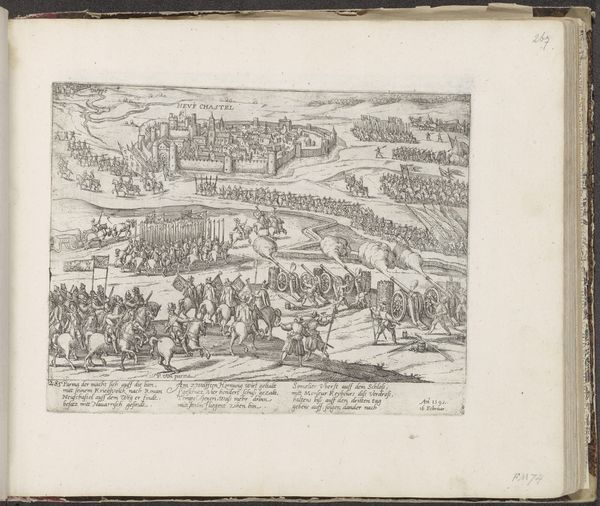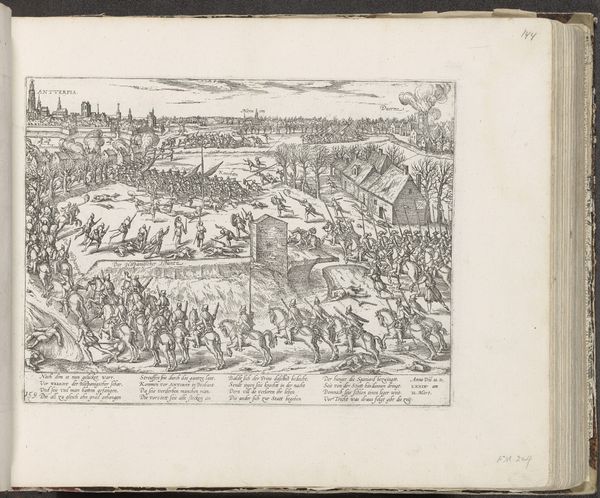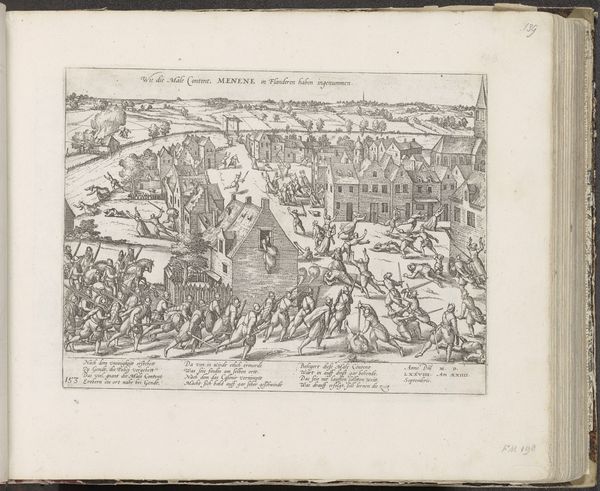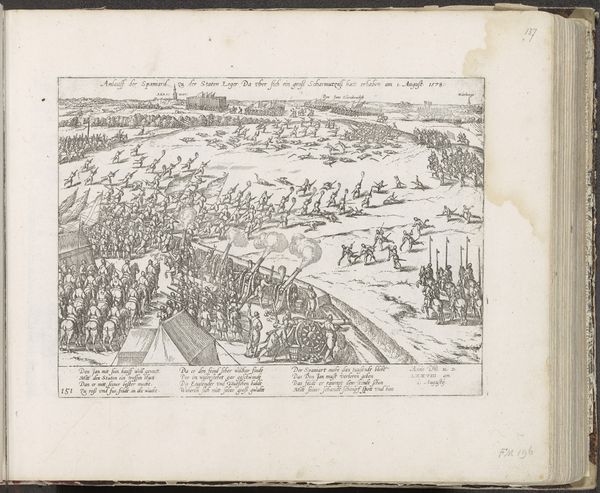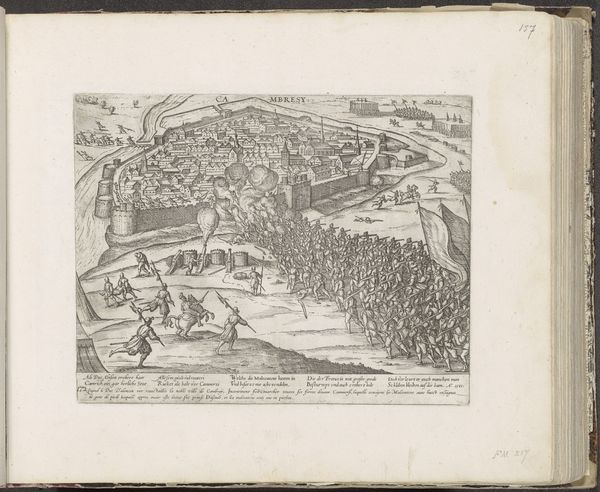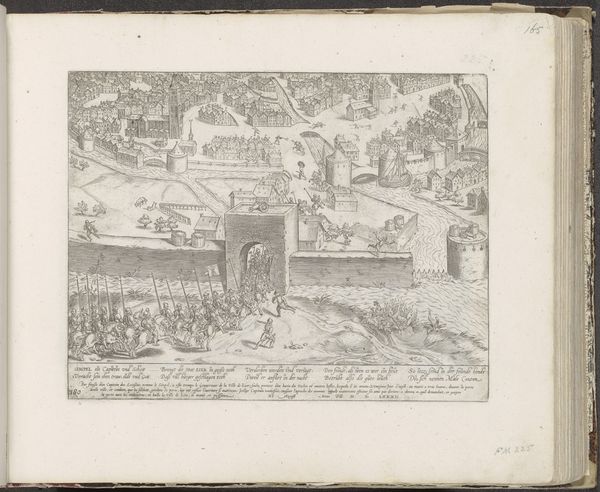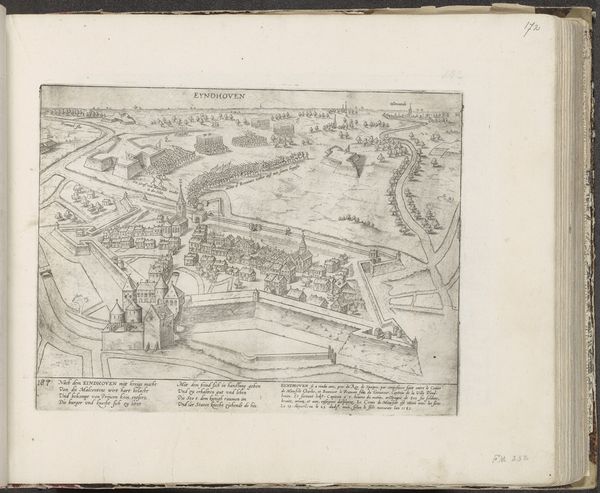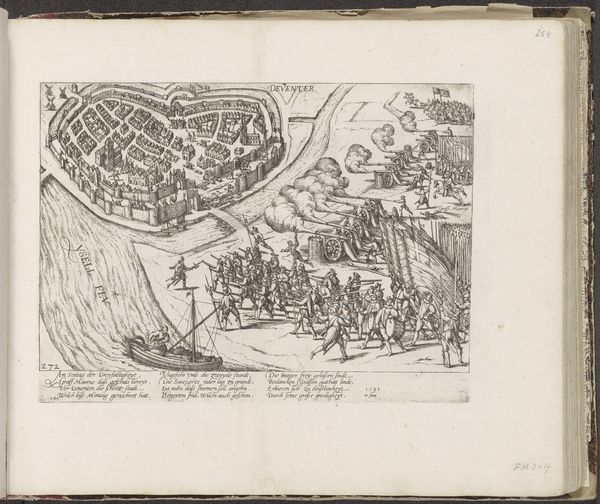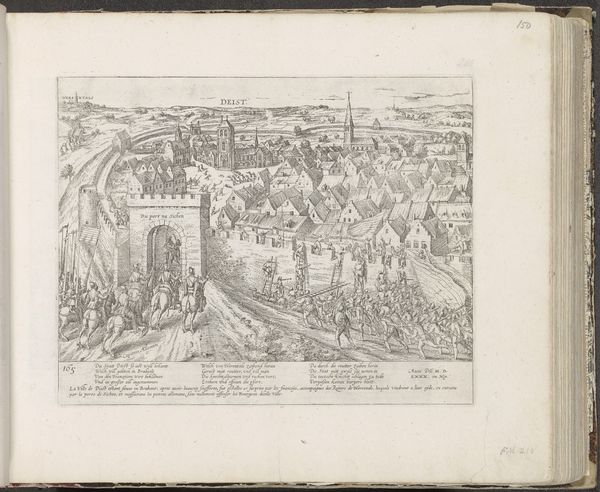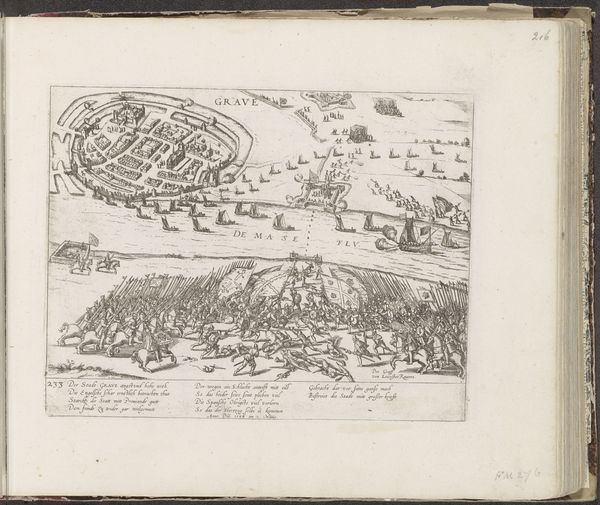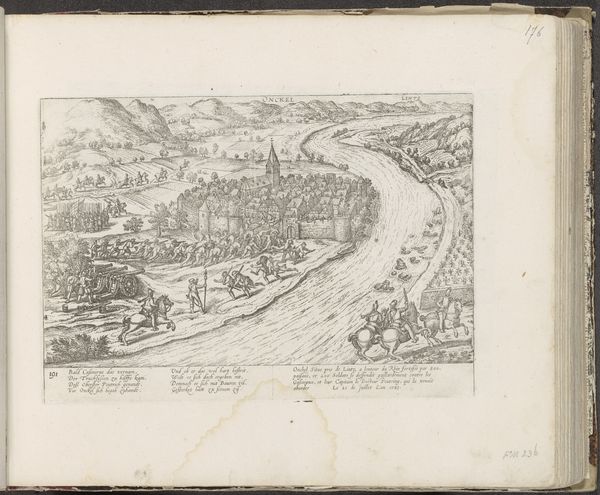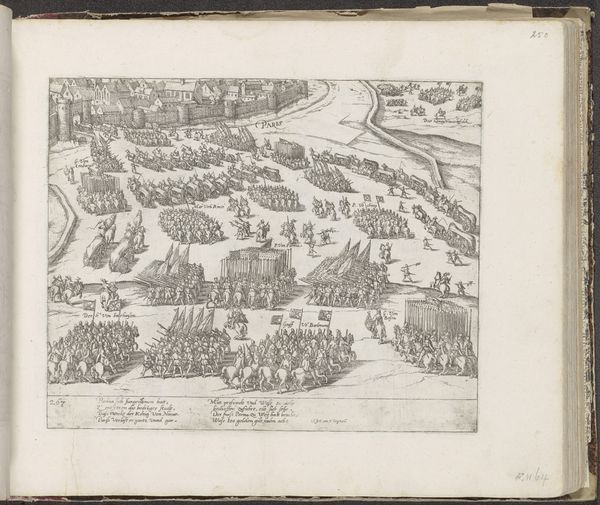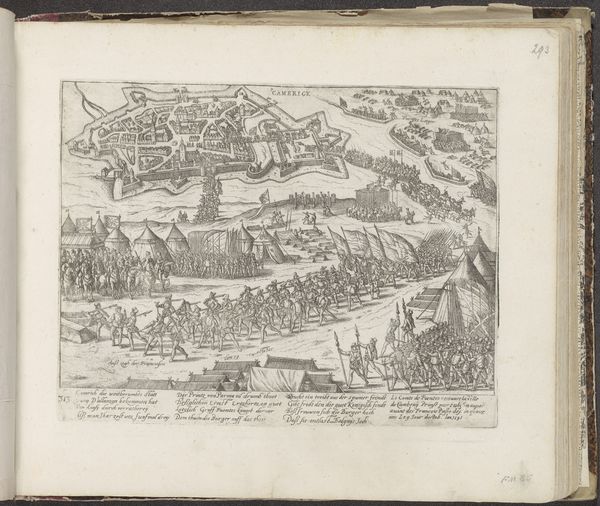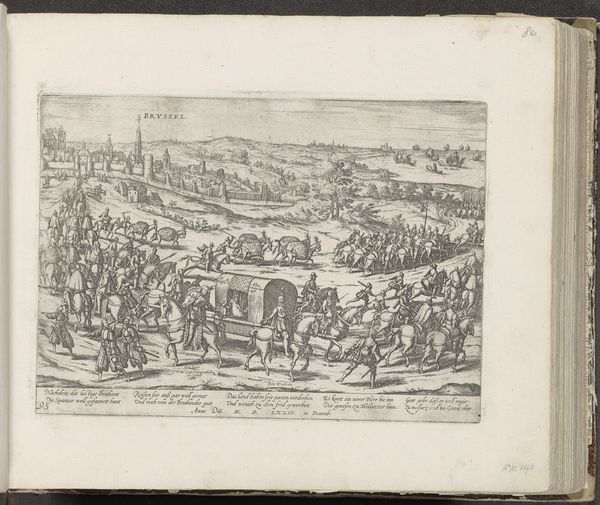
print, etching
#
aged paper
#
toned paper
#
baroque
#
dutch-golden-age
# print
#
pen sketch
#
etching
#
sketch book
#
landscape
#
personal sketchbook
#
pen-ink sketch
#
pen work
#
sketchbook drawing
#
history-painting
#
sketchbook art
Dimensions: height 221 mm, width 269 mm
Copyright: Rijks Museum: Open Domain
Curator: Let's consider this print, "Inname van Rheinberg door Spinola, 1606" made between 1606 and 1608. What catches your eye? Editor: It’s… overwhelming! All those tiny figures, the detailed landscape... It feels like a bird's-eye view of a massive, coordinated effort. But I’m curious, what's most striking to you about this piece? Curator: For me, it’s how the printmaking process itself reflects the event depicted. Think about it: the etching, the painstaking work of the printmaker. Every line, every figure, meticulously rendered and replicated. The print functions as a kind of historical record. It also had the purpose of replicating a political point of view for popular consumption. Do you see it? Editor: Yes, I do! It's like the meticulous labor involved in creating the print mirrors the immense effort it took to capture Rheinberg. And the prints would have been distributed widely... propaganda, almost? Curator: Precisely. And consider the materiality: the paper itself, the ink, all commodities shaped by global trade routes. The act of capturing Rheinberg fueled further economic expansion and commodification of war. How does viewing it this way change your perspective? Editor: It makes it feel less like a static image and more like a document tied to complex economic and social systems. The materials aren't neutral, are they? Curator: Exactly. Every element has a history, reflecting production and consumption. The artist’s role shifts too: are they creating art, or manufacturing a historical account for wider dissemination? Editor: It’s amazing to consider the layers of meaning embedded in a single print. I will think about materiality a lot more in my other classes from now on. Curator: Agreed! By acknowledging materiality and means of production, we can develop fresh, nuanced understanding of these images.
Comments
No comments
Be the first to comment and join the conversation on the ultimate creative platform.
